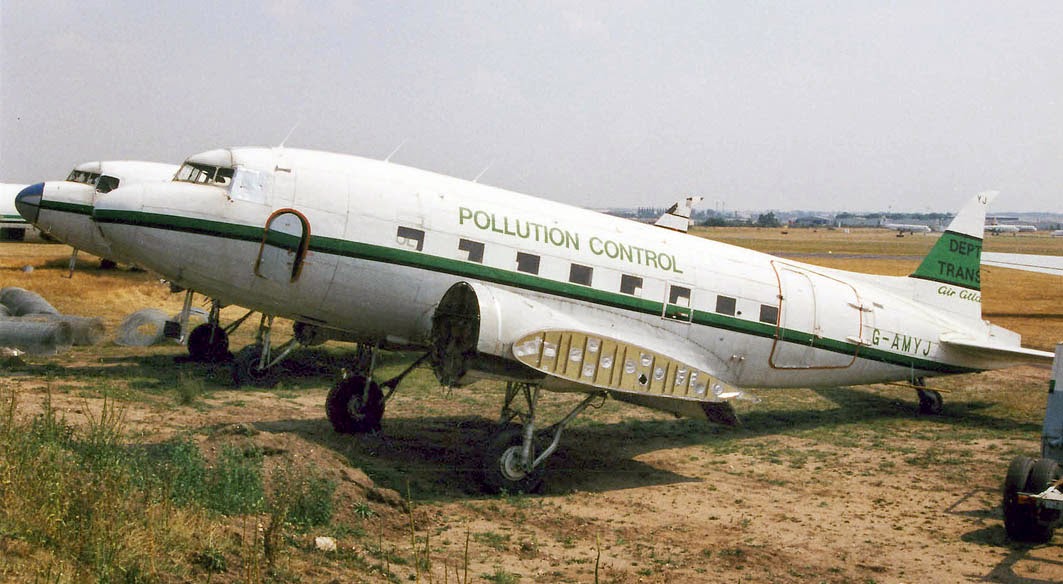She arrived on low-loaders and was pieced back together by a small team led by ex-RAF Senior Engineering Warrant Officer George Astley MBE.
 |
| G-AMYJ on the dump |
As time went on it became clear that it was possible to bring her back to 'life' and two correct Pratt & Whitney Twin Wasp engines were acquired via Air Atlantique as well as flight-worthy propellors. These were installed late in 2009 and a restoration programme was started including a complete rubdown and repaint carried out by myself and Peter Kondras in 2011 into correct RAF Olive Drab colours.
The task to resurrect her was vast, The electrics were in a mess and a number of hydraulic, pneumatic and engine components were missing or U/S.
The team came together for the task and included; George Astley, Graham Sharp, Grant Sparks, Brian Watmough, Bob Emmett, Peter Kondras, Marie Taylor, Ray MacElwain, Ken (radio Ken) Sanderson & Myself. Help came from many outside specialists including; Air Atlantique, CFS Engineering Coventry, Yorkshire Hydraulics, Battle of Britain Memorial Flight & Mark Edwards - DC3 Licensed engineer and pilot on type & 'Paddy' Green - owner of airworthy Dakota N5831B, currently based at East Kirkby in Lincolnshire.
The task was long but the first engine runs were carried out by myself and George in early 2013 and all was progressing well until George's unexpected death in the Summer. This knocked the morale of the team heavily, but we ran the engines for his daughter, and his funeral service (fittingly) was held at the Museum on the same day. We also asked his daughter to unveil the aircraft's new name 'Warrant Officer, George Astley MBE' on the port side of the cockpit just before the funeral service.
 |
| One of the first engine runs |
Engine runs and restoration continued and finally the decision to taxy her was taken after Bob Emmett had worked his skills on the braking and hydraulic systems.
The day Sunday 12th October was chosen and proved to be very calm, but with heavy fog. However, this gradually lifted and after the Museum's DH Devon had been put through its paces by Steve Pepper and the Devon team it was time for the 'Grand old lady' to steal the show.
As I had carried out all engine runs from the right hand seat, I decided, as I was to taxy her, then I would taxy her from that seat. Graham Sharp was in the left seat with Steve Pepper acting as 'observer' and Bob Emmett monitoring the hydraulics for any leaks or pressure problems.
 |
| The crew L to R - Graham, me and Bob |
I signaled for chocks away and released the brakes and she immediately rolled forward for a brake check. It was then that I realised I had just moved a WW2 veteran aeroplane under its own power for the first time! I was wearing my Grandfather's RAF Identity Discs 'dogtags' on my flying suit, the last time they were worn in an aircraft was in a Dakota which crashed at Down Ampney at the end of WW2. My Grandfather was one of the lucky ones that escaped the crash, the pilot's sadly did not...
 |
| On the runway |
 |
| Just after shut down - thumbs up! |
Find out more about the DC-3 at http://www.douglasdc3.com
No comments:
Post a Comment